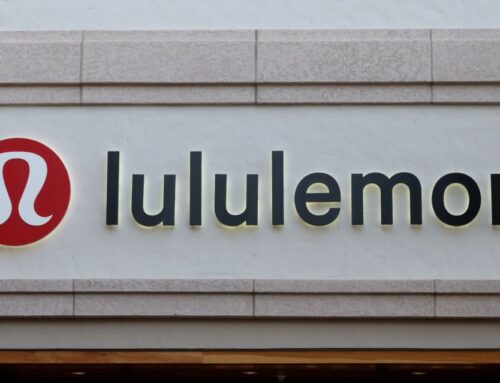Tariff Shock May Drive Major Shift In Retail Media Spending
April 8, 2025
President Trump’s sweeping tariffs—including a 54% rate on Chinese imports—are forcing consumer brands to make difficult tradeoffs across their businesses. Beyond product pricing decisions, one of the most immediate impacts is emerging in retail media spending, where brands are dramatically reallocating investments in ways that could reshape the $62 billion industry.
The impact of these tariffs varies dramatically by product category, according to retail industry analyst Bryan Gildenberg. “Categories are all over the map – toys and games are the highest tariffed and highest import % category by far,” Gildenberg explains, noting that “most of the high tariff categories are discretionary where price point trade down or deferring purchase are options for a sticker-shocked shopper.”
With Amazon sellers already reporting significant cuts to advertising budgets and strategic shifts in campaign objectives, the tariff impact extends beyond product pricing to fundamentally alter how brands approach customer acquisition and retention. This category-specific impact directly influences retail media allocations, with discretionary categories facing the most significant strategic challenges.
Across the retail media and ecommerce ecosystem, consultants, agency owners, and brand operators are reporting consistent patterns in how their clients are responding to these new tariff pressures. Their observations reveal several emerging trends.
Immediate Ad Spend Reductions May Hit Amazon’s Ecosystem
For many brands selling on Amazon, cutting advertising spend has become one of the first responses to offset tariff-driven margin compression. This could result in a dampening of the platform’s years-long trend of consistently growing ad investment.
“Many have started to cut down on PPC (pay-per-click advertising) spend to tackle this,” said Prem Gupta, a former Amazonian and agency owner. These reductions come as sellers face difficult choices: absorb the tariff costs to maintain pricing and customer loyalty—straining profit margins in ways that may not be sustainable—or raise prices and risk losing sales momentum and algorithmic visibility.
The challenge is acute for any brand that relies on international manufacturing. Travis Campbell, CEO of Eagle Creek, a 50-year-old adventure travel gear company based in Colorado, illustrates the magnitude in an open letter to legislators: “As of April 1, we have outstanding purchase orders for around $1.8M, on which we would ordinarily pay $260K in duties… Our initial calculation for incremental tariffs on these existing purchase orders is an additional $580K.”
For brands operating with slim margins, this cost increase often makes advertising cuts seem inevitable.
Strategic Shifts In Campaign Objectives
Beyond simply reducing spend, brands are fundamentally rethinking their retail media strategies to prioritize efficiency over growth. This represents a significant shift for many direct-to-consumer brands that have historically used retail media primarily to drive customer acquisition and market share gains.
Harry Joiner, an e-commerce recruitment specialist who has developed a “90-Day Tariff Game Plan” for digital commerce executives, suggests brands should reserve Amazon ad inventory “for known winners and margin accretive ASINs (Amazon Standard Identification Numbers)” while deprioritizing broad brand campaigns in the immediate term. His framework emphasizes that visibility and margin protection matter more than brand building during the initial 90-day response period.
This reprioritization extends to SKU-level marketing decisions. As tariff impacts vary significantly by product category and sourcing location, brands are conducting detailed contribution margin analyses to determine which products can sustain advertising support.
“Audit SKU-level tariff exposure (10–34% increases), starting with top-velocity items,” Joiner advises, adding that brands should “re-forecast post-tariff contribution margin by channel.” This data-driven approach allows companies to concentrate remaining ad dollars where they’ll generate the most efficient returns.
The Contrarian Case For Maintaining Ad Spend
While many brands are cutting back, some industry experts advocate for a contrarian approach: maintaining advertising investment while competitors retreat.
“Now is the time to grow your market share while competitors are scared,” argues Jason Landro, co-CEO of digital marketing agency Nectar. Rather than automatically reducing spend, Landro suggests brands “don’t cut back on ad spend” but instead “get hyper efficient without taking steps backwards.”
This approach requires a renewed focus on advertising efficiency through conversion optimization rather than simply reducing investment. “You focus on improving your conversion rates. You attempt to increase click-through rates,” Landro explains, identifying the tariff disruption as a potential opportunity for prepared brands.
Katharine McKee, an e-commerce strategist, offers a similar perspective, suggesting that “to weather downturns you need to find a way to make back lost profits” and that while cuts are easier than growth, they represent a slippery slope.
McKee recommends a more strategic approach to potential advertising reductions: “Marketing is the easiest and the first to go but be strategic. Brand building now will make lower funnel easier in a few months, so if you need to make cuts here do it on the moonshots.” She also advises brands to audit their accounts and see what could be more efficient, making strategic cuts if needed.
How Chinese Sellers Are Responding
Looking beyond immediate responses, the tariff situation is accelerating longer-term shifts in retail media strategy. The unexpected resilience of Chinese sellers, even in the face of steep tariffs, may reshape competitive dynamics for all brands operating in U.S. marketplaces.
Joe Zhang, who recently met with Chinese Amazon sellers generating $20-100M in annual GMV, reports that these sellers maintain significant advantages despite the new tariff environment. “Chinese sellers still have an advantage in the competitive landscape of the U.S. retail market, and they can implement strategies that are much broader than those available to U.S. sellers,” Zhang explains.
Surprisingly, even tariffs as high as 104% haven’t dampened these sellers’ confidence. Zhang notes that for many, the tariff impact ($5,200-$10,400 on typical container values) remains comparable to the extreme shipping costs they weathered in 2021, giving them experience in managing similar cost pressures.
This resilience is translating into more aggressive brand-building strategies. Rather than retreating, Zhang says these sellers are “pursuing branding more aggressively” and “may challenge some U.S. local brands using more aggressive cost strategies.” This shift could significantly impact retail media allocation as Chinese sellers invest more heavily in brand-focused campaigns rather than purely transactional advertising.
As I’ve previously reported for Forbes, over 71% of retail media spending typically occurs in lower-funnel advertising like sponsored products. The competitive pressure from well-funded Chinese sellers may accelerate all brands’ need for mid and upper-funnel investments that build brand equity and price resilience.
This aligns with Harry Joiner’s strategic framework, which recommends brands evolve toward “platform-exclusive SKUs to reduce cross-channel price-matching pressure” and eventually “develop/modify brand narratives to justify ASP increases” – precisely the areas where Chinese sellers appear to be focusing their efforts.
A Possible De-Centralization Of Retail Media Investment
The tariff disruption is accelerating a critical strategic divergence between Chinese sellers and established national brands. While Zhang reports that “existing Amazon sellers should consider diversifying their channels,” this advice carries different implications depending on a brand’s market position and existing relationships.
For Chinese sellers who have built their business primarily on Amazon’s third-party marketplace, diversification options remain relatively limited. Most lack the established wholesale relationships and operational infrastructure needed to sell through traditional retail channels that operate on a vendor model. Their diversification typically means expanding to other marketplace platforms like Walmart.com, but rarely extends to comprehensive omnichannel distribution.
This limitation creates a strategic opening for national brands that already sell through multiple retailers. As tariffs squeeze margins and intensify competition on Amazon, these brands may find their marketing dollars work harder on less saturated retail media networks.
National brands that sell across multiple retailers may find some respite in ad costs and competition in their retail partners outside of Amazon. While abandoning Amazon entirely isn’t viable given its market share, the ROI calculation is shifting in favor of emerging retail media networks with less intense auction pressure.
Retailers with established media networks like Best Buy and Home Depot offer these brands alternative channels where their established vendor relationships provide advantages that marketplace-only sellers can’t easily replicate. The lower competition for ad inventory on these platforms potentially offers better visibility at lower costs.
This channel advantage may prove especially valuable as all brands face margin pressure from tariffs. For national brands, strategic reallocation of retail media dollars—focusing Amazon spend on defending core SKUs while expanding investment in less competitive retail media environments—could provide a crucial edge in navigating the challenging months ahead.
The Road Ahead
As consumer goods companies navigate the early weeks of the tariff impact, the retail media landscape faces a period of significant disruption and potential restructuring. The brands that will emerge strongest are those that approach advertising spend strategically rather than reactively.
The most sophisticated organizations are conducting detailed analyses of tariff impacts at the SKU, channel, and platform levels to inform precision-driven retail media allocations. As Chad Rubin, founder of ecommerce pricing software Profasee, warns: “Pricing on Amazon is not ‘set it and forget it.’ It’s chess. It’s fluid. And it demands precision.” The same could be said for retail media investment in today’s environment.
For retail media platforms, the coming months may bring volatile spending patterns as brands adjust to new cost structures and reassess their channel strategies. However, platforms that can demonstrate clear return on ad spend and provide tools for precision targeting of high-margin products may find opportunities to increase their share of brand budgets, even as those budgets face unprecedented pressure.
Search
RECENT PRESS RELEASES
Related Post



